Above: After successfully laying eggs, a yellow-bellied slider heads back into the pond.
At this time of year many turtles are moving up to dry land to lay eggs. They turn up in the most peculiar of places in their quest for the perfect spot in which to dig a hole and lay their eggs (According to Ornithopter Operator, John Hammons, a Yellow-bellied Slider was found on the Ornithopter one May morning).
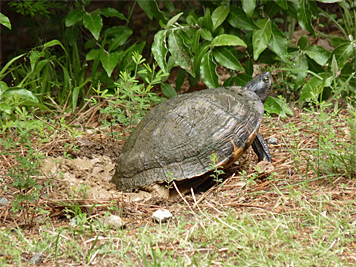
Museum staff often encounter Yellow-bellied Turtles walking down the paved path in Explore the Wild or Catch the Wind while they (the turtles) are heading for the Wetlands after depositing their 4-12 eggs (snapping turtles usually lay from 20-30 eggs).
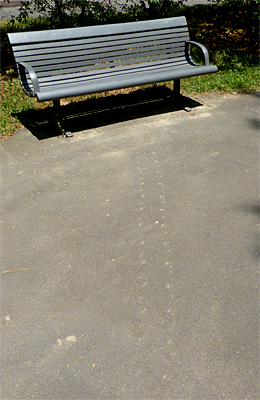
Sometimes the turtles are disturbed before they can lay their eggs, leaving an empty hole.
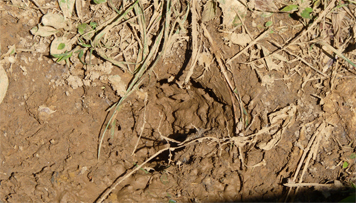
There were raccoon tracks leading to, and away from, the hole in the above photo, so perhaps it was a raccoon that sent the turtle back to the water prematurely.
Sometimes a hole is dug, but not covered.
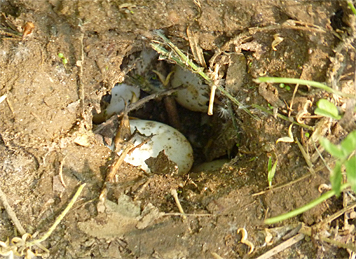
Snapping Turtles have been up and about too.
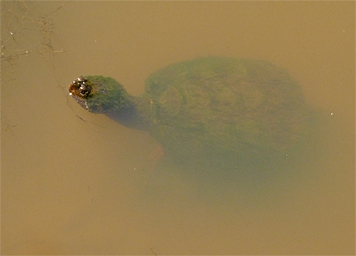
One hapless snapper was apparently wedged under a fence near the back entrance gate to the Butterfly House. The turtle was liberated with the help of “Deputy Rangers,” Dale, Al, and Cliff (Facilities Technicians Dale Hill, Al Gustafson, and Cliffton B. Hayes).
Good work men!
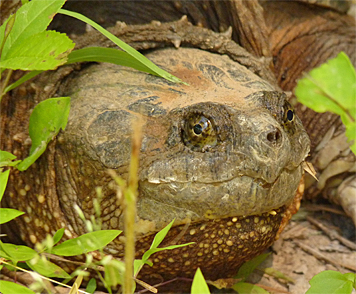
On the gentler side of turtledom, there have been many Yellow-bellied Sliders and other Testudines out basking in the Wetlands.
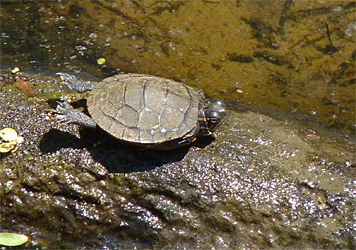
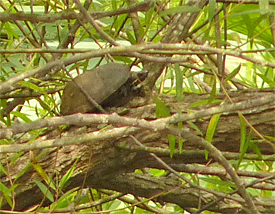
The first “new” American Toad of the season was seen on 15 May.
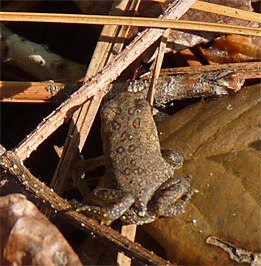
Eastern Narrowmouth Toads (Gastrophryne carolinensis) were heard in the Wetlands during the Butterfly Bash of 15 May. Don’t expect to see these very secretive and small (1-1.5″) toads, I’ve only seen two here at the Museum and both were young and fresh out of the water. They were both seen in July and were less than 3/8″ in length. But, who knows, you may get lucky, so keep an eye out. Have a look and listen here.
Gray Treefrogs have been calling with more frequency this month. Although they’re not as easily seen as they are heard, thunderstorms and rain bring them out in numbers.
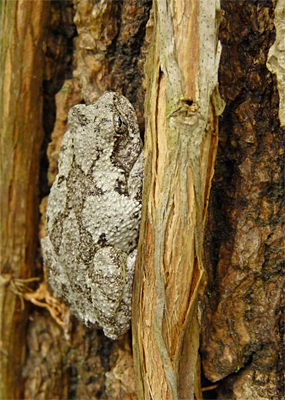
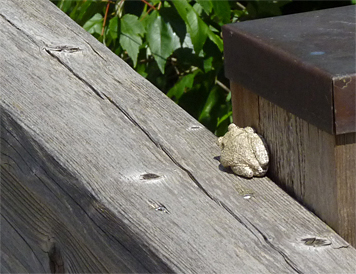
And get a load of this little guy…
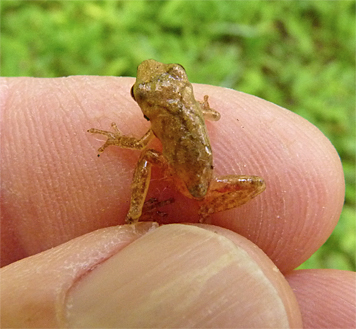
A snake.
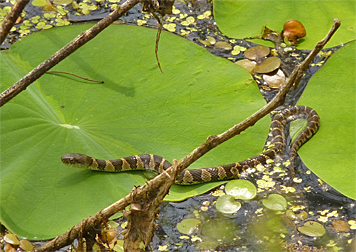
Could the young water snake in the photo be the same one that was rescued from the Bear House back in April? Maybe, maybe not, but it’s good to see that our water snakes are successfully breeding.
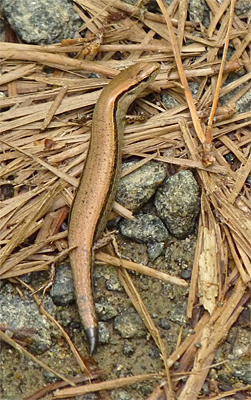
The skink in the photo must have had a run-in with a bird or some other predator, better to lose your tail than your life. Like most lizards, this lucky skink’s tail will grow back.
I’ve seen half a dozen or so Ground Skinks in the past week, most were quickly wiggling across the pavement to the safety of the grassy edge. Elsewhere, they are most often seen, or heard, as they scurry away in the leaf litter as you walk along a woodland trail.
Get out and have a look around yourself, and let me know what you see.
Wonderful, as always. Love the turtle eggs and the turtle sunning with legs outstretched behind him! All are wonderful photo catches.
Thanks Wendy, glad you liked the post.